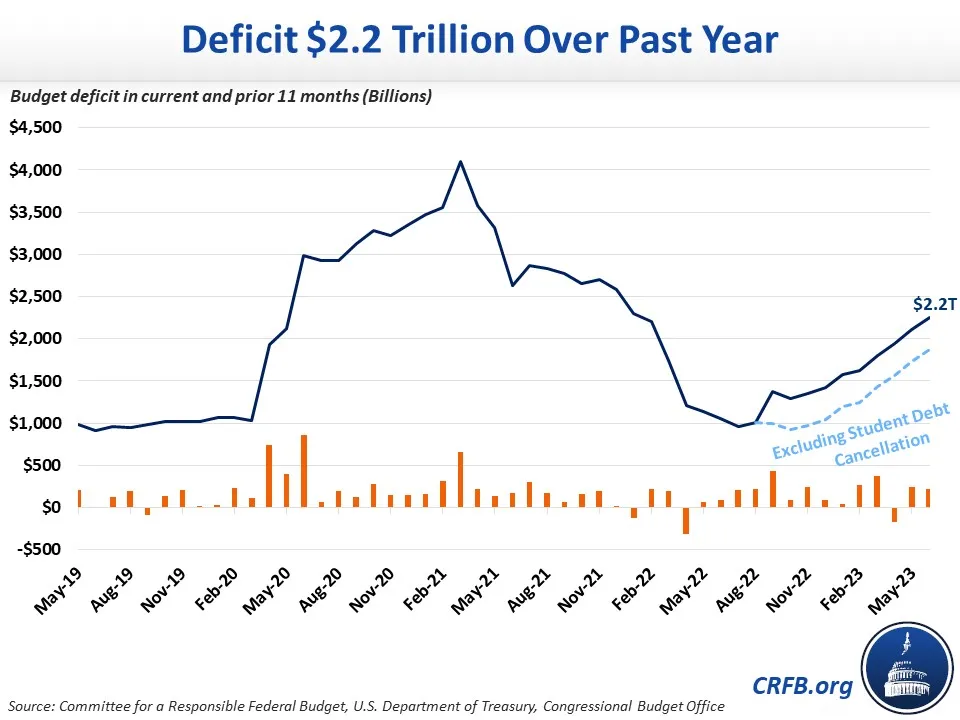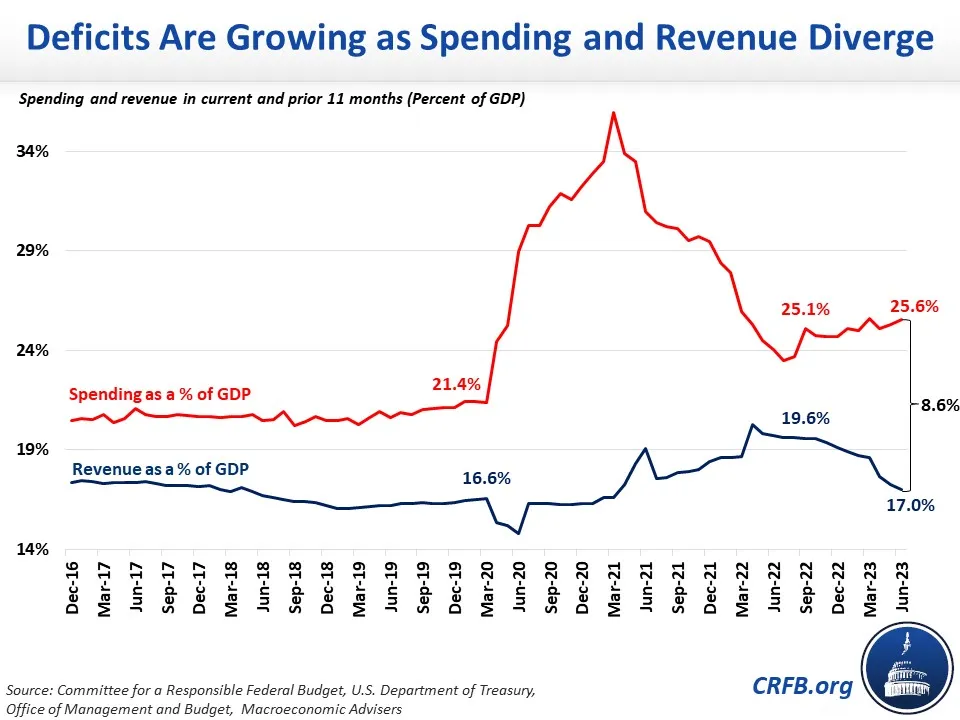The Deficit Was $2.2 Trillion Over Past Year
The federal budget deficit totaled $2.2 trillion over the past 12 months, up 64 percent from the $1.4 trillion deficit in Fiscal Year (FY) 2022 and more than twice as large as the deficit prior to the beginning of the pandemic. The 12-month rolling deficit from July 2022 to June 2023 is $136 billion higher than it was last month, thanks to a $225 billion deficit in the month of June, compared to $89 billion last June. The following is an update of last month's analysis, incorporating the latest data.
Compared to the prior 12 months, total nominal spending is up 14 percent to $6.7 trillion and revenue is down 7 percent to $4.5 trillion.

As a share of the economy, deficits have totaled 8.6 percent of Gross Domestic Product (GDP) over the past year, more than double the 50-year historical average of 3.6 percent.
Spending has totaled 25.6 percent of GDP over the past year, compared to 24.0 percent in the prior year. Rising spending on Social Security, Medicare, and interest – along with the student debt cancellation recorded last August but not yet reversed in light of the Supreme Court's ruling – have more than offset declining spending on pandemic relief.
Meanwhile, the recent temporary revenue surge has ended, with revenue falling from a near-record 19.6 percent of GDP in FY 2022 down to 17.0 percent of GDP over the past 12 months – below the 50-year historic average of 17.4 percent and below what the Congressional Budget Office projected it would be back in 2018.

With deficits expanding, substantial policy change will be needed to bring spending and revenue in line. The recent Supreme Court ruling against the legality of student debt cancellation and the implementation of the Fiscal Responsibility Act are likely to help reduce deficits in the near term, but much more action will be needed to stem the unsustainable medium- and long-term trajectory of the debt. Policymakers should work together to get the economy and our fiscal health back on track.


